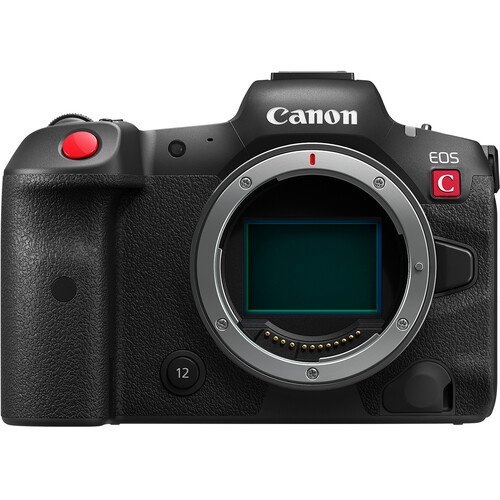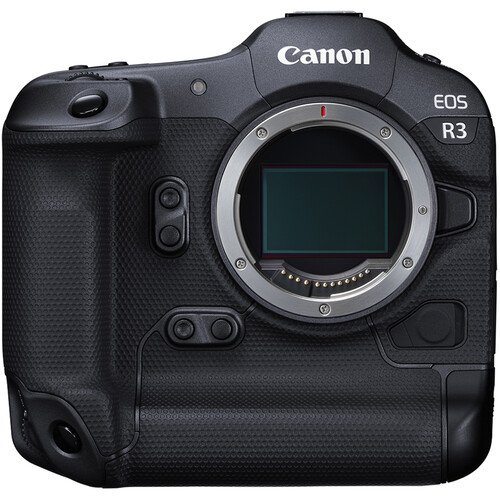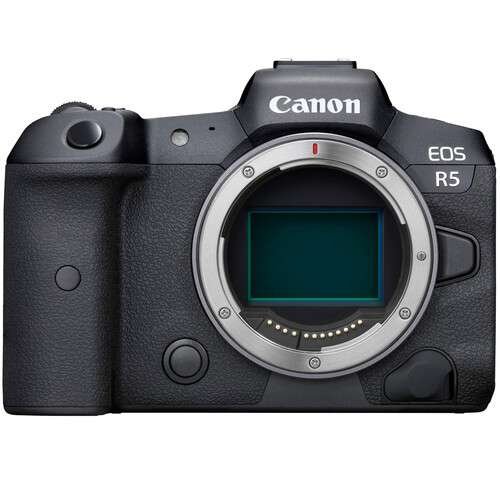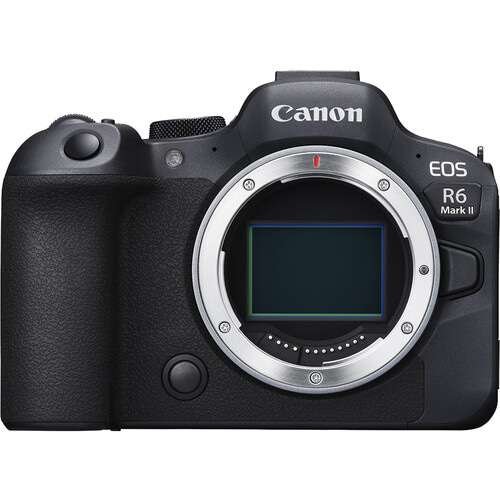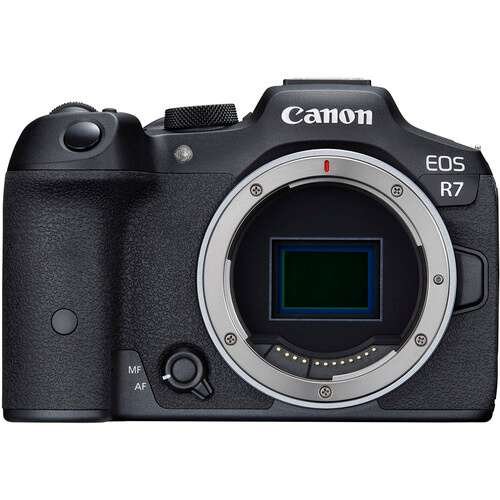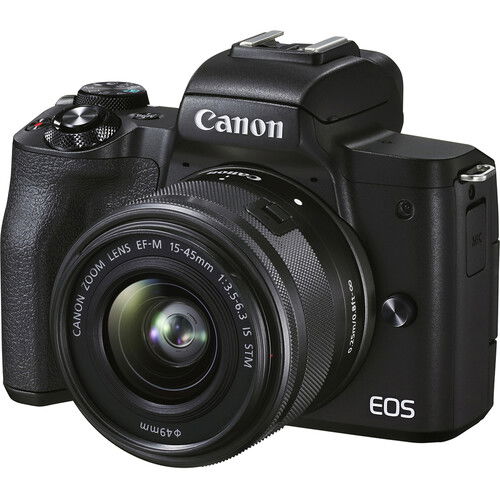Best Canon Cameras for Video in 2024
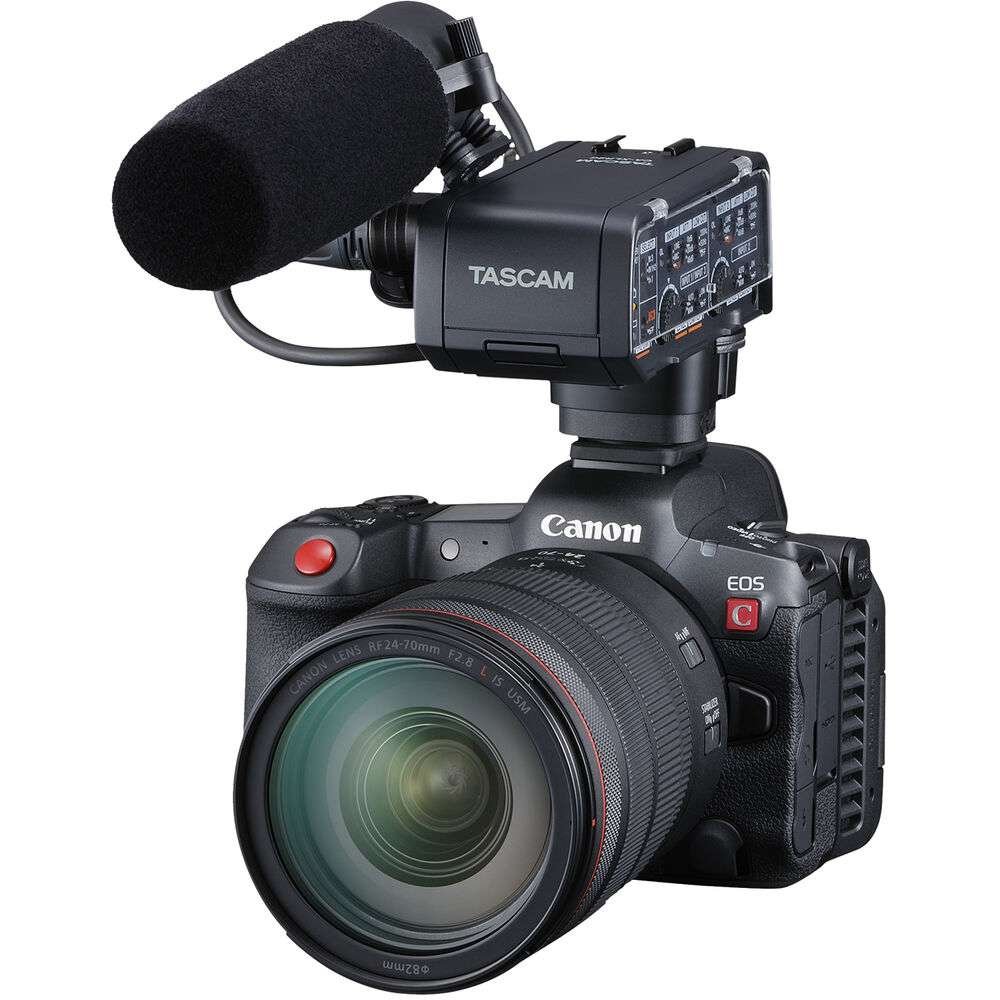
Today, cameras have become an essential tool for content creators, filmmakers, videographers and even casual users. With the increasing popularity of online video platforms like YouTube, Vimeo, and TikTok, there has been a surge in demand for cameras that can capture high-quality videos. Canon is one of the leading manufacturers of cameras, and their range of cameras for video is highly sought after by professionals and enthusiasts alike.
Whether you’re a professional filmmaker, an aspiring vlogger, or someone who simply wants to capture high-quality videos of special moments, there is a Canon camera that is perfect for your needs. Canon offers a wide range of cameras, each with its own unique features and capabilities, making it easy for users to find the best camera to suit their specific needs and preferences.
To help you choose the best Canon camera for shooting video, we have compiled a list of some of the best Canon cameras for video, taking into consideration factors such as video resolution, frame rate, image quality, autofocus performance, image stabilization, audio inputs and other essential features. We have also included some tips on what to look for when buying a Canon camera for video recording, as well as some frequently asked questions about Canon cameras for video.
So, Canon has a range of cameras that cater to different videography needs and budgets. Whether you’re a professional videographer or a casual user, investing in a Canon camera for video can help you create stunning videos that are sure to impress. So, read on to discover the best Canon cameras for video and start creating your own cinematic masterpieces today!
Best Canon Cameras for Video
In this article, we present a list of the best Canon video cameras for different needs and preferences. We’ve chosen a range of cameras that cater to various shooting scenarios, from experienced videographers to solo shooters and vloggers. Our selection includes:
- Canon EOS R5 C: Best Canon Camera for experienced videographers
- Canon EOS R3: Best Canon Camera for video shoots in tough conditions
- Canon EOS R5: Best Canon Camera for hybrid shooting
- Canon EOS R6 Mark II: Best Canon Camera for solo shooters
- Canon EOS R7: Best Canon Camera for filming wildlife and sports
- Canon EOS M50 Mark II: Best Canon Camera for Vlogging
All the cameras we feature retail between $500 and $10,000 and represent the best and most current crop of Canon camera options. Below, we’ll delve into each camera and its features in more detail.
1. Canon EOS R5 C
Best Canon camera for experienced videographers
Canon EOS R5 C Key Features:
- Two Cameras in One Body: Photo + Cinema
- 45MP Stills, Full-Frame 8K CMOS Sensor
- Photo/Video Switch Changes Settings Menu
- Supports 8K/60P Internal RAW Recording
- Internal Cooling Fan Enables Non-stop 8K/60P Recording
- Internal Cinema RAW Light up to 8K/60P
- Supports 8K HDR Recording (HLG/PQ)
- Wide Variety of Recording Formats
- Simultaneously Record Different Formats
- XF-AVC and MP4 Codecs for 10-bit 4:2:2 Video
- 4K and 2K Oversampling
- HDMI 8K RAW Output to Compatible Recorders
- Up to 4K 120P Slow and Fast Motion Recording Mode in 4:2:2 10-bit
- Simultaneous Audio Recording Enabled with HFR
- Canon Log 3 Expands Expressive Possibilities
- Enhanced Image Stabilization
- Canon VR with RF5.2mm F2.8 L Dual Fisheye Lens Support and Workflow
- Dual Pixel CMOS AF with iTR AF X
- DIGIC X Image Processor with an ISO range of 100-51200; Expandable to 102400
- High-Speed Continuous Shooting of up to 12 fps with Mechanical Shutter and up to 20 fps Electronic (Silent) Shutter
- The Same Subject Detection and Tracking AF as the EOS R5, Even at Shooting Speeds as Fast as 20 fps
- CFexpress Type-B and SD UHS-II Slots
- Timecode DIN Port, Multi-Function Shoe
- 4-Channel Audio Record with XLR Adapter
- 13 Reassignable Buttons
- Store Links at B&H, Adorama.
Pros:
- Active cooling
- Unlimited recording time, also in 8K
- Better separation of photo and video options
- Better tools for video
- All the AF capabilities of the R5
- 8K 60p in 12-bit Cinema Raw-Light
- Anamorphic display
- Time-code connection
Cons:
- Bigger and heavier than the R5
- No image stabilization in the camera
- Still micro-HDMI
- Sometimes additional power is needed
The Canon EOS R5 C is a video-focused camera that combines the benefits of the EOS R5 and Cinema EOS lineup cameras. It is an ideal camera for professional filmmakers, journalists, creators, and advanced amateurs. The camera has a strikingly elegant body that provides a wide range of video and still formats and features. It has a three-way power switch to choose between photo/video mode, and its video mode boasts a host of options not usually seen in mirrorless cameras.
The camera features a cooling fan built into the body, forcing out the heat from inside. This enables continuous and virtually limitless shooting of high-definition 8K/60P video without interruption. The camera supports internal 8K/60P RAW or Cinema RAW Light recording, HDMI 8K RAW output to external recorders, and 8K HDR recording. The interface was expanded to meet the needs of professional filmmakers, including 13 assignable buttons. The camera allows recording of 10-bit 4:2:2 video in a variety of formats. The 8K sensor with DIGIC X processor allows for up to 2K and 4K oversampling, and it is possible to shoot up to 4K 120p in 4:2:2 10-bit while taking advantage of Canon Log 3 profile for endless creative possibilities in post-production.
The EOS R5 C camera also features a timecode in/out terminal, which is particularly useful for synchronizing multiple cameras at once. Additionally, a front tally lamp indicates recording, and attaching TASCAM’s CA-XLR2d Audio XLR Adapter to the Multi-function accessory shoe gives XLR input options.
The camera is moisture and dustproof to the same level as its cinema cousin, the EOS C70. It has a CMOS sensor and DIGIC X processor that produce high-quality video at up to 8K60 resolution. The camera supports HDR recording in Hybrid Log Gamma (HLG) and Perceptual Quantization (PQ) format, which helps ensure full color rendition and wide latitude with a great range from black to pure white.
The camera also supports RAW output via HDMI and ProRes RAW recording with compatible external recorders such as Atomos devices. By connecting the EOS R5 C camera with a supported external recorder, users can shoot in Apple ProRes RAW at up to 8K30. Proxy data can also be simultaneously recorded to an SD card in-camera, providing efficient post-production operations.
In summary, the Canon EOS R5 C is a highly capable camera for professional video recording. Its features and design make it an ideal camera for filmmakers, journalists, creators, and advanced amateurs who need a camera that can produce high-quality video and stills in a wide range of formats. The camera’s built-in fan enables continuous and virtually limitless shooting of high-definition 8K/60P video without interruption, and its expanded interface and assignable buttons make it easy to customize the camera for individual preferences.
Canon EOS R5 C Body at B&H, Adorama.
See also:
2. Canon EOS R3
Best Canon Camera for video shoots in tough conditions
Canon EOS R3 Key Features:
- 24MP Full-Frame Stacked BSI CMOS Sensor
- Dual Pixel CMOS AF II, Eye Control AF
- 6K60 Raw and 4K120 10-Bit Internal Video
- Raw video or 10-bit C-Log3 video capture
- 30 fps E. Shutter, 12 fps Mech. Shutter
- 5.76m-Dot EVF with 120 fps Refresh Rate
- 3.2″ 4.2m-Dot Vari-Angle Touchscreen LCD
- Sensor-Shift 5-Axis Image Stabilization
- Multi-Function Shoe, Built-In Vert. Grip
- CFexpress & SD UHS-II Memory Card Slots
- Wired LAN and 5 GHz Wi-Fi Support
- Store Links at B&H, Adorama.
Pros:
- 6K60 Raw and 4K120 video modes
- 14-bit Raw imaging at up to 30fps
- Intelligent autofocus with excellent subject recognition
- Good handling
- Innovative eye control AF
- Large HDR viewfinder with OVF simulation
Cons:
- Pricy
- Eye control AF limited
- Mediocre resolution
- Fiddly micro HDMI port
The Canon EOS R3 is a mirrorless camera that is considered the best option for video shoots in tough conditions. With its weather-sealed body, the camera can withstand harsh environments like rain, snow, and sand, making it reliable and robust. The large battery of the Canon EOS R3 allows it to work in colder conditions and shoot for longer, with the ability to power by USB and charge remotely. The autofocus capabilities of the Canon EOS R3 are advanced, as it can detect and track vehicles, animals, faces, and eyes, ensuring both stills and videos are always in sharp focus.
The camera body of the Canon EOS R3 is big and weighs 822g, but it is ergonomically designed to be operated by the right thumb, making it easy to handle. The on/off switch is separate from the shutter release, which could be a more ergonomic place for it, but it is now operated by the right thumb rather than needing a second hand to flick the switch on the left of the top plate. The major controls are repeated, allowing the camera to be held for horizontal or vertical operation, and the same hold can be used. The large grip at the bottom of the body houses a huge Canon Li-ion LP-E19 battery, which is moisture and dust resistant.
The Canon EOS R3 is built for speed, versatility, and reliability. Revolving around a new full-frame stacked sensor, updated AF performance, and refined body design, the EOS R3 is the first 3-Series camera since the film era, and it is a fast-shooting, flexible, and contemporary mirrorless camera. The 24.1MP stacked sensor offers truly fast readout speeds to help reduce rolling shutter distortion and benefit fast continuous shooting and video recording applications. The full-frame BSI CMOS sensor is also benefitted by an updated DIGIC X processor, which helps boost the overall speed for up to 30 fps continuous shooting with an electronic shutter, 6K 60p raw, and 4K 120p video recording.
The Canon EOS R3 is the first EOS R-series camera to feature a built-in vertical grip, making it an ergonomic choice for long shooting times and for seamlessly switching between horizontal and vertical shooting orientations. The rugged body design also incorporates a high-resolution 5.76m-dot OLED EVF and a 3.2″ vari-angle touchscreen LCD, along with dual memory card slots, wireless and wired connectivity, and an updated Multi-Function Shoe design for expanded accessory compatibility.
The Canon EOS R3 also boasts impressive video capabilities, with high-res 6K raw 12-bit internal recording and uncropped 4K 120p 10-bit recording with Canon Log 3. Both 6K and 5.6K recording areas can also be used for oversampled DCI and UHD 4K shooting with improved sharpness, reduced moiré, and lower noise. HDR-PQ recording is possible, too, for in-camera HDR production, and external recording via the HDMI port supports a clean 4K output at up to 60 fps. All-I, IPB, and IPB Light compression options are available, along with the ability to use Dual Pixel CMOS AF II when shooting at up to 6K raw. Unlimited recording times are possible, too, and the R3 features both.
In conclusion, the Canon EOS R3 is an excellent choice for video shoots in tough conditions. With its weather-sealed body, advanced autofocus capabilities, and impressive video capabilities, the Canon EOS R3 is a reliable, robust, and versatile mirrorless camera that is suitable for professional videographers and photographers alike.
Canon EOS R3 body at B&H, Adorama.
See also:
3. Canon EOS R5
Best Canon Camera for hybrid shooting
Canon EOS R5 Key Features:
- 45MP Full-Frame CMOS Sensor
- Canon RF mount
- 8K30 Raw and 4K120 10-Bit Internal Video
- 12 fps Mech. Shutter, 20 fps E. Shutter
- Sensor-Shift 5-Axis Image Stabilization
- Dual Pixel CMOS AF II with 1053 Points
- 0.5″ 5.76m-Dot OLED EVF
- 3.2″ Vari-Angle Touchscreen LCD
- Subject Tracking with Deep Learning
- CFexpress & SD UHS-II Memory Card Slots
- Weight: 738g
- Store Links at B&H, Adorama.
Pros:
- High-resolution sensor for tons of detail
- Absurd levels of autofocus control
- High-end video features
- Lots of tactile controls
Cons:
- Recording limitations
- Bigger than the R6
- Large raw files require lots of cards and computing power to edit
The Canon EOS R5 is a high-end full-frame mirrorless camera that excels at both stills and video capture. Its 45MP CMOS sensor, DIGIC X image processor, and Dual Pixel CMOS AF II with 1053 selectable points offer exceptional performance, making it the perfect choice for professional image-makers who demand speed, resolution, and video capabilities.
One of the most impressive features of the EOS R5 is its ability to capture 8K RAW video internally at 30 frames per second. This feature provides lots of scope for post-capture cropping of video and stills. The camera also records 4K (4:2:2 10-bit) at frame rates up to 120p, which is ideal for creating slow-motion effects. Firmware updates have added new features, such as the ability to record 8K 30p ProRes RAW when paired with an Atomos Ninja V+ Monitor & Recorder. Additionally, switching from internal to external recording unleashes unlimited 8K recording, essentially until the battery runs out or the card fills up, allowing the system to run cooler, whatever the ambient temperature.
The camera features a newly developed 45MP CMOS sensor that offers high-resolution stills and video output, and the fine-tuned DIGIC X image processor complements this with a wealth of speed. Sensitivity from ISO 100-51200, which can be expanded to ISO 102400, suits working in a variety of lighting conditions while quick continuous shooting up to 12 fps with a mechanical shutter, or silent 20 fps with an electronic shutter, is ideal for working with moving subjects.
The 5-axis sensor-shift image stabilization system is another standout feature of the EOS R5. It compensates for up to eight stops of camera shake, allowing for effective compensation of camera shake to suit handheld shooting with slower shutter speeds. This stabilization system also works in concert with lens-based optical image stabilization for both native RF lenses and adapted EF lenses.
The EOS R5’s autofocus system is simply the best we’ve seen on a camera. Clever enough to track faces even if they are obscured, this will pay huge dividends when shooting weddings, while the 12fps (20fps with electronic shutter) burst shooting speed will mean you never miss a shot. The camera also features an especially high-resolution 0.5″ 5.76m-dot electronic viewfinder that provides a realistic 120 fps refresh rate while the 3.2″ rear touchscreen LCD monitor sports a vari-angle design to accommodate vlogging needs as well as benefit working from high and low angles. A top status LCD makes for an intuitive workflow and the camera also incorporates dual memory card slots, one CFexpress Type B and one SD UHS-II, along with Bluetooth and Wi-Fi wireless connectivity.
However, there are some downsides to the Canon EOS R5. One of the most significant limitations is the recording limitations, which include overheating and recording time restrictions. The camera is also bigger than the R6, and the large raw files require lots of cards and computing power to edit.
In conclusion, the Canon EOS R5 is a top-of-the-line camera that offers an array of impressive features for both video and stills photography. The camera’s autofocus system is the best on the market, and the in-body image stabilization system is also highly effective. While the camera is expensive and has some limitations, it is an excellent choice for professional photographers and videographers who need high resolution, speed, and video capabilities.
Canon EOS R5 body at B&H, Adorama.
See also:
4. Canon EOS R6 Mark II
Best Canon Camera for solo shooters
Key Features:
- 24.2MP Full-Frame CMOS Sensor
- 4K/60p video (oversampled from 6K)
- 6K ProRes RAW video with a compatible Atomos recorder
- C-Log3 picture profile for video editing
- 12fps mechanical shutter (40fps electronic shutter)
- Raw burst mode with pre-capture
- Sensor-Shift 5-Axis Image Stabilization rated to 8.0 stops
- Moving subject HDR mode
- 3.69m-Dot OLED EVF capable of up to 120 fps refresh (0.76x magnification)
- 3″ 1.62m-Dot Vari-Angle Touchscreen LCD
- Dual UHS-II SD Card Slots
- Weight: 588 g
- Store Links at B&H, Adorama.
Pros:
- Up to 40fps in electronic shutter mode
- Excellent autofocus
- In-camera focus stacking
- Good battery life
- 180 fps high-speed movie
- 4K 60p without crop (oversampled from 6K)
- False color overlay and C-log3 for filming
Cons:
- Slightly lower image quality than rivals
- Limited codecs for video
The Canon EOS R6 Mark II is a full-frame camera that is designed for both stills and video creators, making it a versatile option for multimedia use. It features a 24.2MP CMOS sensor and DIGIC X processing, which allow for improved low-light performance, high-speed bursts, and high-res 4K video. The camera also has an In-Body Image Stabilizer (IBIS) that can correct up to 7 stops of camera shake, which is helpful when shooting handheld or recording videos.
The Canon EOS R6 Mark II is an ideal camera for solo shooters due to its enhanced Dual Pixel CMOS AF, which can recognise more subjects and track them with greater precision. It also features professional Cinema EOS-like focusing functions, such as Detect only AF and electronic focus breathing correction, which gives lower-cost lenses the smooth look of high-end cinema lenses when pulling focus.
Video recording on the EOS R6 Mark II is top-notch, with the ability to shoot full-width 4K 60p video that is oversampled from 6K, giving it extra-wide dynamic range thanks to Canon Log 3. Slow-motion video recording is also impressive, with class-leading Full HD 1/6-speed recording at 180fps. The camera also features false color warnings that provide a clear indication of the exposure of a shot and gimbal-like stability offered by the trio of In-Body Image Stabilisation (IBIS), lens IS and Movie Digital IS working together to curb camera shake.
The Canon EOS R6 Mark II is also capable of shooting longer clips, as there is no 30-minute clip limit, and the camera stays cooler due to better heat efficiency. This makes it ideal for shooting longer format content such as interviews and live events like weddings and music performances. The camera also has a five-second movie pre-recording function, which is useful when filming unpredictable subjects.
In addition to saving 4K 60p internally, the EOS R6 Mark II is capable of recording 6K in ProRes RAW to an Atomos Ninja V+. There is also the option of using professional XLR microphones via an optional adapter on the camera’s Multi-function shoe, making it a good option for a smaller camera on a multi-cam production. It also gives flexibility and a flavour of high-end full-frame cinema cameras to independent filmmakers.
Overall, the Canon EOS R6 Mark II is a powerful filmmaking tool that offers excellent performance for both stills and video creators. Its features make it an ideal camera for solo shooters, as well as for use in a multi-cam production.
Canon EOS R6 Mark II body at B&H, Adorama.
See also:
- Best Lenses for Canon EOS R6 Mark II
- Best Memory Cards for Canon EOS R6 Mark II
- Best Gimbals for Canon EOS R6 Mark II
5. Canon EOS R7
Best Canon camera for filming wildlife and sports
Canon EOS R7 Key Features:
- 32.5MP APS-C CMOS Sensor
- Dual Pixel CMOS AF II
- Oversampled UHD 4K up to 30p, line-skipped or cropped 4K/60p
- 10-bit video as ‘PQ’ true HDR footage or C-Log
- Up to 30 fps shooting (e-shutter), 15 fps with mechanical
- 2.36m-Dot OLED EVF
- 1.6m-Dot Vari-Angle Touchscreen LCD
- In-body image stabilization, rated at up to 7 stops
- Dual UHS-II Memory Card Slots
- Environmental sealing
- Mic and headphone sockets
- Multi-Function Shoe, Wi-Fi and Bluetooth
Pros:
- The most feature-rich APS-C camera Canon has ever delivered
- Great ergonomics
- Excellent autofocus and stabilization
- Fast burst shooting
- Great resolution
- Great eye tracking for humans, animals, birds, and cars
- Great number of video options and resolutions
- Good ISO performance and dynamic range
- Great value
- Good handling
Cons:
- Very few RF-S lens options
- Buffer is quickly filled at fast burst speeds
- Lack of 4K/120p video
The Canon EOS R7 is a mirrorless camera that is well suited for wildlife and sports photographers, thanks to its 1.6x crop APS-C sensor that fills the frame with the subject. This 32.5 MP CMOS sensor is capable of high-speed 30 fps shooting, and the Dual Pixel CMOS AF II focusing system can keep up with and track fast-moving subjects. The camera also features in-body stabilization up to 7 stops with coordinated control IS, and 4K60p video, which makes it an ideal all-around camera for dedicated professionals and advanced hobbyists.
The Canon EOS R7 has a compact design and a sleek appearance, and it is capable of shooting high-resolution UHD 4K 60p internal video using the full width of the sensor, making it perfect for those who enjoy filming wildlife and sports. The camera also offers cropped 4K recording, which applies a 1.81x crop to the image, giving extra reach while maintaining the same resolution. Additionally, the EOS R7 can record standard 4K and ‘Fine’ 4K, which oversamples the 7K sensor output to produce more detailed clips. The camera can also shoot Full HD at up to 120p for silky slow-motion playback of fast action.
The EOS R7 features a sophisticated subject detection and tracking technology that allows it to keep track of animals and athletes on the move. It also has the combined three-way shake reduction of IBIS, lens IS, and Movie Digital IS, which combats camera movements to deliver smooth footage. The camera can shoot up to 15 fps using mechanical shutter up to 30 fps with the electronic shutter and with RAW Burst Mode with 1/2 second pre-shooting, which can capture the perfect moment down to the split second.
The camera has a 5-axis In-body Image Stabilization with auto-level technology that features up to 7 stops of shake correction with coordinated control IS. This feature can be a game-changer for handheld videos and low light photography. The camera also features Smart Shoe integration for audio and HQ 4K (oversampled from 7K), making it an ideal choice for professional-quality videos.
The Canon EOS R7 is optimized for video and comes with Dual UHS II SD memory card slots for recording to both cards. The camera also allows recording each clip over 30 minutes, so users can set up their video without worrying about it stopping after 30-minutes.
Overall, the Canon EOS R7 is an excellent camera for wildlife and sports photography and videography. Its 32.5MP APS-C sensor, high-speed shooting, and advanced autofocus system make it an ideal choice for capturing fast-moving subjects with clear and impressive detail. Additionally, its 4K video recording capabilities, subject detection and tracking technology, and in-body stabilization make it excellent for recording action, wildlife, and everything in between.
Canon EOS R7 body at B&H, Adorama.
Canon EOS R7 with 18-150mm Lens at B&H, Adorama.
See also:
6. Canon EOS M50 Mark II
Best Canon Camera for Vlogging
Canon EOS M50 Mark II Key Features:
- 24.1MP APS-C CMOS Sensor
- DIGIC 8 Image Processor
- 4K UHD 24p and HD 120p for Slow Motion
- Dual Pixel CMOS AF with Eye Detect AF
- Vari-angle Touchscreen LCD Convenient for Vlogging and Various Composition
- Convenient Vertical video, Touch Record Control, Movie Self-Timer Features for Content
- Web cam capability with Canon’s EOS Webcam Utility
- Wireless YouTube live-streaming capability
- Built-in 2.36 Million Dots OLED EVF with Touch and Drag AF
- 3.0″ 1.04m-Dot Vari-Angle Touchscreen
- Wi-Fi and Bluetooth; Webcam Capability
- Extended ISO 51200, 10 fps Shooting
- Combination 5-Axis Image Stabilization
- Store Links at B&H, Adorama.
Pros:
- Creative assist to help beginners
- 24.1MP stills and 4K (cropped) video
- Clean HDMI out
- Vertical video
- YouTube live streaming
- Lightweight and stylish
Cons:
- Cropped 4K video with slower autofocus
- Eye Detect AF not 100%
- Short battery life
- Doesn’t support USB charging
- Small burst capture buffer
The Canon EOS M50 Mark II is a versatile camera for vloggers and content creators that offers a well-rounded photo and video feature set. It is equipped with a 24.1MP APS-C CMOS sensor and DIGIC 8 image processor, which allow a quick 10 fps shooting rate, a native sensitivity range of ISO 100-25600, and UHD 4K video recording at 23.98 fps, along with Full HD 1080p60 and HD 720p120 for slow motion capture. The camera is lightweight, weighing only 388g, and has a built-in viewfinder and a vari-angle touchscreen. The flip-around screen is essential for vloggers, and the Canon EF-M 11-22mm f/4-5.6 IS STM lens is a perfect partner when shooting at arm’s length. It is stabilised and has an STM focusing system to avoid any unwanted sound.
The M50 Mark II’s physical design suits content creation, especially with the inclusion of a large 3.0″ LCD that sports a vari-angle design for working from high and low working angles. The touchscreen interface allows working with Touch and Drag AF for easier manipulation of the AF area, and a 2.36m-dot OLED electronic viewfinder also allows for high-resolution eye-level viewing. Additionally, built-in Wi-Fi with NFC is available for quick and convenient pairing with a smartphone or tablet for wireless image sharing, and Bluetooth is also featured for image sharing to and remote camera control from a mobile device. The camera also has wireless connectivity, which permits using it as a webcam when using the EOS Webcam Utility Software.
Dual Pixel CMOS AF offers smooth and fast focusing performance, making it ideally suited to shooting and tracking moving subjects so that critical focus is attained with each shot. Eye Detection AF can also be used for portraiture and helps to prioritize focus on a subject’s eye for ensured sharpness. When shooting video, a Movie Servo AF mode offers smooth and natural focusing when changing from different subjects or different distances within the scene, as well as the ability to specify tracking sensitivity, AF speed, and Face Tracking priority. The Combination IS system uses the built-in 5-axis digital image stabilization in conjunction with lens-based image stabilization systems to effectively minimize the appearance of camera shake for sharper handheld shooting.
Canon has added functionality in this second iteration to make life much easier for vloggers. The three major advantages of the EOS M50 Mark II over the EOS M50 are improved face and eye tracking autofocus, vertical shooting, which is ideal for platforms such as TikTok, where you still make the most of the 4K resolution; and it now also has the ability to livestream to YouTube. Additionally, there is now vertical video recording capabilities, a movie self-timer function, touch record control, and support for image.canon Cloud Service for improved workflow efficiency.
In conclusion, the Canon EOS M50 Mark II is a great camera for vloggers and content creators. It is lightweight and easy to use, with a flip-around screen and advanced autofocus features. It also has improved video capabilities, including the ability to livestream to YouTube and shoot vertical video, making it an ideal camera for content creation across multiple platforms.
Canon EOS M50 Mark II with 15-45mm Lens at B&H, Adorama.
Canon EOS M50 Mark II Content Creator Kit at B&H, Adorama.
See also:
How to Choose the Best Canon Camera for Video: 5 Features to Consider
If you plan to use your Canon camera for both photography and video, it’s important to consider its capabilities for both when making your purchase. It’s also important to consider your workflow, as some Canon DSLRs may be too heavy to take to remote locations. In such cases, a mirrorless camera might be a better option. Regardless of the camera type, when choosing a camera for video, consider the following features:
High frame rates and resolutions
For the best video quality, you need a camera that can record at high frame rates and resolutions. A higher resolution will provide better image quality, while a higher frame rate will allow you to capture fast-moving subjects. Look for a camera with at least 4K or 8K resolution and 60fps.
Autofocus
When you’re filming a moving subject, you need a camera that can adjust focus smoothly and quickly. Look for a Canon camera that offers good autofocus coverage during video recording.
Image stabilization
When filming handheld footage, camera shake can be a significant issue. Look for a camera with in-body image stabilization and shake correction to ensure stable footage.
RAW support
Shooting in RAW provides the best image quality and greater post-processing opportunities. The same applies to RAW video recording. Look for a Canon camera that supports RAW video recording at high frame rates.
Storage options
Video footage requires a lot of disk space, especially at high resolutions. Choose a Canon camera with options such as dual card slots and fast connections to external recorders to ensure you have enough storage space for your footage.
How to Shoot a Video on a Canon Camera: Simple Steps to Follow
Shooting a video on a Canon camera is easy, especially if you have one of the best Canon cameras designed for video. Simply turn the Mode Dial to the video icon, and you’re ready to go. When you’re ready to start recording, press the button with the red dot, and press it again when you want to stop.
For older Canon camera models, shooting videos requires a few more steps. You’ll need to enter the Menu, navigate to the Live View/Movie function settings, and press the SET button. From there, select Stills + Movie, then either Movies or Movie Display, and press SET again to start recording. While it may take a little more effort, following these simple steps will have you capturing great videos in no time.
What is the best camera for vlogging?
To ensure high-quality vlogs, you need a camera that has fast autofocus, a flip screen, long battery life, live streaming features, built-in WiFi, and excellent video quality. When it comes to Canon cameras, the EOS M50 Mark II and EOS R6 II are the best options for vlogging.
Read more:
